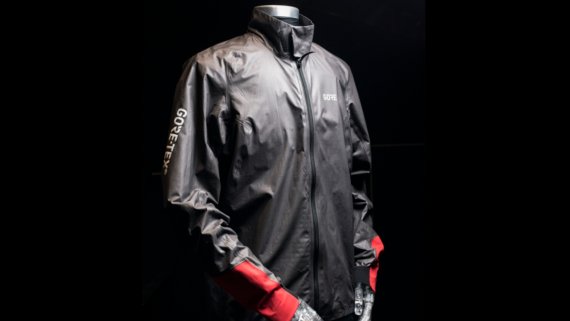
What happens during the disposal of weatherproof clothing? Membrane specialist W.L.Gore & Associates has had the combustion behaviour of PTFE investigated in a study.
In order to assess the sustainability of products, it is not enough to just look at the manufacturing processes. It is equally important to consider what happens to a product at the end of its longest possible life cycle. Because no matter how often a garment is worn, repaired and reused, at some point it will become a waste item.
Of course, this also applies to a Gore-Tex jacket with polytetrafluoroethylene (PTFE) membrane. What happens during their disposal? "From the discussion with Greenpeace in 2017, we started to investigate what happens to a PTFE polymer at the end of its life - when it is thrown away and ends up in a waste incinerator," explains Bernhard Kiehl, Head of Sustainability at Gore Fabrics.

So far, such combustion studies have only been available for the USA, but not for Europe. In order to investigate the combustion behavior of PTFE according to the standards of European and Asian combustion plants, Gore commissioned scientists from the Karlsruhe Institute of Technology - a world-renowned, state-funded research institute in Germany.
Kiehl: "It was important to us that when we commissioned such a study, it had to meet all scientific standards." The scientists tested the PTFE by burning PTFE pellets supplied by Gore with natural gas, wood pellets and air in a pilot incinerator at 870°C and 1020°C, simulating the conditions of a typical municipal incinerator.
Sustainability in the Outdoor Industry: From Products Made from Plastic Waste to Sustainable Exhibition Stands
The result: If PTFE is incinerated at temperatures that are typical for a household waste incineration plant, no environmentally hazardous chemicals are released.
PTFE is essentially converted into carbon dioxide and hydrogen fluoride, which is converted into non-toxic fluorspar in the filter systems. The results are peer-reviewed and have just been published in the science journal Chemosphere.
The study did not investigate how PTFE behaves when burnt in an open fire. Here completely different, varying conditions prevail. However, it has long been known that the uncontrolled combustion of any kind of textiles or membranes releases countless toxic substances and is dangerous.
"Such studies have been available for 45 years," explains Kiehl, reacting to a recent accusation that burning PTFE in an open fire produces highly toxic substances such as hydrofluoric acid.
From Kiehl's point of view, burning over an open fire is not a common method of waste disposal for weatherproof clothing: "According to recyclers of old clothing, rainwear is mainly sold to Eastern Europe and Russia because the climate there is similar and the necessary purchasing power is available. Very similar disposal routes also exist there. There the textile waste ends up - just like here - either in a regulated landfill or in incinerators. It is not plausible to us why the open fire scenario is presented as the common disposal method for weatherproof clothing."
- ISPO awards
- Mountain sports
- Bike
- Design
- Retail
- Fitness
- Health
- ISPO Job Market
- ISPO Munich
- ISPO Shanghai
- Running
- Brands
- Sustainability
- Olympia
- OutDoor
- Promotion
- Sports Business
- ISPO Textrends
- Triathlon
- Water sports
- Winter sports
- eSports
- SportsTech
- OutDoor by ISPO
- Heroes
- Transformation
- Sport Fashion
- Urban Culture
- Challenges of a CEO
- Trade fairs
- Sports
- Find the Balance
- Product reviews
- Newsletter Exclusive Area
- Magazine


















